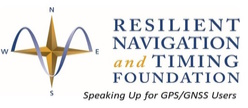On the 26th of October NIST and IEEE hosted a workshop on “Timing Challenges in the Smart Grid” at the sprawling and attractive NIST campus in Gaithersburg, MD. Here are some quotes and observations from the morning and early afternoon sessions, and from a couple of sidebar conversations we had:
Power Companies said:
- “Timing is used in multiple applications in multiple locations in grids right now.”
- “The current grid won’t fail without time, but we can’t manage it without time.”
- “Most power distribution applications need a 1µ sec timing signal, some require 500 ns or maybe even 100 ns.”
- “Traveling Wave Fault Detection has the strictest requirements for timing.”
- “A bad GPS signal & cheap receiver led to the loss of two 500KV lines, one 40 miles, the other 80 miles long.”
- “We all need an accurate time balance across large areas.”
- “Timing is a security issue.”
- “We use Ethernet to backup our GPS receivers, but understand that Ethernet time is traceable back to GPS.”
- “Some holdover clocks we use are good for a few minutes, the more expensive (and far fewer number) for a day or so.”
- “Until recently, maybe today, timing has been an afterthought for us.”
- “Having and using a good time signal could have prevented the 2003 east coast blackout.”
- “We were using Loran-C for time before they shut it down in 2010.”
Industry and Government Researchers said:
- “Need to incorporate timing into NIST Smart Grid test bed.”
- “Of all cyber attacks against critical infrastructure in 2012 – 41% were against the electrical grid.”
- “GPS spoofing is a much greater danger than we thought.” ‘
- “Our tests show that, after being spoofed, many GPS receivers don’t reacquire lock when the spoofing is over.”
- “eLoran was demonstrated to provide time within 30ns w/o an external antenna indoors at the New York Stock Exchange.”
- “The electrical sector has an extreme reliance on GPS. This is very bad for resilience.”
- “An eLoran system could solve most, if not all, of our timing problems.”
- “Renewable sources are changing grid requirements rapidly and we need good time to adapt and integrate them.”
We also had the opportunity to visit the NIST museum and see some interesting clocks, including one used to keep the national time standard. Outside the museum is an apple tree that was grown from a cutting from Sir Isaac Newton’s apple tree. We stood under it, but no apples fell on our head. The historian told us that none fell on Newton’s head either. She said that Newton did write, though, that watching from his desk and seeing apples fall from the tree inspired his work on gravity.

